Itchy dogs can be difficult to watch your dog struggle with excessive chewing, biting, scratching, rubbing, or itching of their skin. Your companion’s suffering is sure to be unpleasant for both of you. You may be left wondering, “What could be causing this? or What can I do to help?” To help answer these questions we have done the research for you when searching for the best dog itchy skin home remedy.
Whether your dog has just begun to itch or has nearly scratched all its fur off we cover natural anti-itch remedies for dogs in any situation. So, to help us better understand this itchy condition let’s look at what makes dogs itch and find out how to stop the scratching with natural remedies such as quality organic CBD oil for dogs , coconut oil, or oatmeal for dog itching for example.
Environmental Allergies
Environmental allergies are one of the most common, if not the number one, cause of your dog’s itchiness. Atopy occurs when a pet has an abnormal response to normal items (allergens) in the environment around them, an allergic reaction. Allergens can come from airborne pollen, house dust mites, mold spores, and even other animals’ dander.
Just like humans, dogs display symptoms like an itchy, runny nose and eyes, and sneezing; however, dogs are also different than humans as the main effects of atopy are directed at the skin (body, paws, and ears). These symptoms typically develop at an early age but can develop at any age and are often initially seasonally manifested. Many dogs will develop into a non-seasonal itch cycle after the first year of symptoms.
Hot spots from atopy can flare up anywhere on the body but most commonly affects the face area around the eyes, muzzle, ears, underarms, paws, groin, and around the anus region.
Mange
A skin condition in dogs that is caused by mites. Two types of mites cause mange: Follicle mites and surface mites. Follicle mites live in the hair follicles of all mammals, even dolphins! While usually harmless to the host, These mites are transferred from the nursing mother to the puppies as infants.

All dogs have these mites, though in very small numbers as the immune response keeps them under control. Follicle mites are species-specific and will not infect other animals and actually not even other dogs. Follicle mites can become a problem when the immune response isn’t functioning properly. Signs of your puppy may have mange would be lesions that may itch or may not, redness, hair loss, and crusty areas.
The other type of mite is a surface-dwelling mite that burrows under the upper layer of skin and lays eggs in the tunnels it creates. This form of mange is very itchy (the actual reaction is from the fecal material the female mite leaves in the tunnels). It can be very contagious, even to humans! In dogs, surface mange can lead to extreme itchiness, redness, developing hair loss, crusting, and secondary infection. It is curable and your veterinarian is the best resource for a proper diagnosis and treatment options.
RELATED: Dog Hair Loss Home Remedies - A Simple Guide
Food Allergy
Like humans, dogs can have a bad reaction to something they eat. A food allergy can exude serious symptoms like vomiting, stomach issues, hair loss, itchiness, and skin conditions. Your pet may be allergic to common, every day, pet food ingredients.

Typically commercial dog food, allergy symptoms appear within the first 6 months to a year of the dog’s life. However, like human allergies, they can manifest at any point in their lifetime. For example, if you switch up your dog’s diet or give it a new kind of dog treat may cause a food allergy to surface.
The proper diagnosis of a primary food allergy is through an elimination dietary trial. This involves feeding your dog a special diet for 8-12 weeks exclusively and determining the response to this diet change (i.e. less itching). This is considered a diagnostic test and is the “Gold Standard” by which primary food allergies are diagnosed. If you think your dog has a primary food allergy, seek advice from your veterinarian.
Flea Allergy
Your dog may endure this unpleasant skin condition when they get bit by a flea and are allergic to the salivary proteins in the flea bite. Hot spots, flea dirt, excessive itchiness, hair loss, redness, and skin thickening are all signs that your dog may have fleas. If your dog is constantly biting at its tail it probably has fleas. Aside from those symptoms, the easiest way to know if your dog has a flea infestation is to simply take a closer look at their skin.

Checking for fleas is simple, just part your dog’s hair and examine for fleas. You may also consider investing in a flea comb to comb for fleas. They usually are found close to the skin and like to hang around on a dog’s tummy or back. Be sure to look close, fleas are tiny. Adults are about the size of a speck of pepper.
Interesting fact: adult female fleas can lay up to 50 eggs per day! If left untreated, this means a massive flea infestation quickly and can create havoc for you and your dog.
Yeast Infection
Yeast infections are fairly common among dogs. A yeast infection occurs when there’s a build-up of a specific type of fungi species of yeast on the dog’s skin. This is a naturally occurring fungus that is a normal inhabitant in all dog’s skin. Normally it is not a problem, but for dogs however, it is commonly seen as a secondary problem to skin allergies, (food or atopy) as yeast can overpopulate and create an itchy situation.

Along with irritated and itchy skin, a dog with a yeast infection can also carry a foul odor (somewhat sickeningly sweet). This is usually the giveaway symptom to a yeast infection plus all the red possibly greasy spots on your pup.
Hot Spots
Also known as acute moist dermatitis, hot spots are wet, red, oozing, cool irritated skin lesions that your dog will uncontrollably lick, gnaw, or itch at. They resemble an infected open wound that will not heal. Hot spots occur when your dog is poorly groomed or has allergies to fleas and mites. Other reasons can be excessive skin moisture, humidity in the air, scrapes, or already-occurring skin problems.

Natural Treatments & Management Of Your Dog's Itchy Skin
Some reasons behind your dog’s skin itching with irritation can be more severe than others. In these cases, you’ll want to try everything you can to keep your dog from scratching. The vet might recommend medication, which can be very effective in many cases. However, many owners do not want to use traditional medications. So, what can you give your dog for itchy or skin irritation as a natural home remedy?
Luckily for us, there are many natural remedies that can help provide relief to your dog’s skin condition. If your dog is not on any medications then we suggest that when beginning any of these remedies to start out by applying a minuscule amount to confirm there are no negative reactions. Once you are positive there are no adverse reactions you can increase the dosage size properly.
If a dog is taking an everyday prescription for itchiness their body may get used to it. It may become less effective. Instead of solely relying on prescription medications, you can try at-home remedies. They can help speed up your companion's recovery.
All of these treatments are organic and safe to use. However, if your dog is on a medication, check with your vet to see if it’s okay to use any of these natural remedies simultaneously.
Oatmeal Bath
If your dog is scratching like crazy a nice oatmeal bath can help soothe the itchy dog skin. Ground oatmeal works best. Simply add some ground oats to some warm water. Let this solution soak on the skin for 10 to 15 minutes. Next, rinse off your dog and it's best to follow this by using a good moisturizing shampoo.

Oatmeal's fats promote lubrication on dry, itchy areas. Dogs with allergies usually need these anti-itch baths regularly to keep a normal coat. Veterinarians typically recommend doing this twice a week for dogs with environmental allergies.
Bathing and brushing your dog normally helps with maintaining a healthy coat. However, excessive bathing can dry your dog’s skin out which can cause intensify the itch. Typically a dog should receive a bath no more than once a month to avoid stripping the skin of natural oils. Although, if your dog is struggling with an itchy condition it is ok to give them a bath up to twice a week.
Apple Cider Vinegar & Water Spray
One of the best, apple cider vinegar pretty much helps heal all. When using on your dog’s skin make sure you use a half and half blend of vinegar and water. Vinegar (acetic acid) is most helpful for yeast dermatitis and less effective for bacterial skin infections, however, it can help in either situation.

Vinegar is very strong and you might want to use more water depending on how you feel. Spray bottles are a great way to apply the solution as an anti-itch for dogs. Generously spray on the solution without drenching your dog. Next, gently massage the solution onto the skin. Avoid using this spray on any open cuts or wounds.
If your dog's paws need the treatment, be sure to soak them in the solution for at least 5 min to be effective. Apple cider anti-itch spray works well for dry itchy skin or poison oak.
Natural Skin Tonic
This is one of the easiest and cheapest ways to help your dog. To create this amazing anti-itch tonic for dogs you will need a lemon, some water, and an applicator that’s good for the dog’s coat (a sponge is best). Slice the lemon thinly, including the rind, and boil the slices. Once boiling, remove from heat and let it steep for about 5 minutes. Let it cool down in the fridge overnight.

This cooling down period allows the healing properties, like d-limonene and vitamin C, to seep out of the lemon. In the morning you can take the sponge and dab it onto your dog’s infected area. That's it you're done, just let your dog soak in the solution air-dry. This dog itchy skin home remedy also works well as a deterrent for fleas.
Omega 3s
These omega 3 fatty acids provide natural oils to your dog’s skin. Omega 3 fatty acids are fed orally, usually in a treat form or a straight omega 3 oil. Healthy ingredients such as fish oil, hemp oil, flaxseeds, pumpkin seeds, soybean oil, lecithin, currant oil, and borage oil can be found in some dog foods.

These ingredients are rich with swelling reduction properties, so if your dog has irritated skin or red spots it will help the irritation resolve. These ingredients also help reduce allergies, red and itchy skin, joint issues, and helps maintain a healthy diet.
We use full-spectrum CBD in all of our products. Full-spectrum CBD is another ingredient rich in omega 3s. We offer CBD pet tinctures that are made with hemp oil which is also full of omega 3 and 6. This is why our products great for reducing swelling and irritations of the skin.
Coconut Oil
You can use coconut oil on your dog just like you would use it with yourself. Coconut oil is an amazing dog itchy skin home remedy. They can eat it, though careful how much or your dog may develop stomach upset. You can also apply the itchy patches to the skin and coat of your dog. This way it can help from inside your dog’s body and outside.

CBD Oil
In a recent research study, it was found that the endocannabinoid system (ECS) may have an effect on the overall health of your skin. This means that properly maintaining the body's ECS is a big factor in having healthy skin and avoiding skin conditions like pruritus. According to the study above, if the ECS is not properly balanced, it "might facilitate the development of multiple pathological conditions and diseases of the skin (e.g. acne, seborrhea, allergic dermatitis, itch and pain, hair growth conditions and many other health issues)."
The endocannabinoid system in pets can be stimulated by cannabinoids from external sources, including cannabidiol (CBD). CBD oil for dogs interacts with the ECS to help promote homeostasis or overall balance. Just apply it directly to the skin and observe the benefits!
Keep in mind that the FDA has not yet approved CBD for any medical uses. As such, it is not intended to prevent, treat, or cure any conditions or ailments.
Baking Soda
You can use baking soda as an anti-itch solution for dogs. Create a paste by combining 50% baking soda with 50% water. Be careful not to use too much baking soda because it is a base and if the solution is too strong it could damage or burn skin.

Next, take the solution and apply it to your dog's affected areas for 20 minutes then rinse it off to help soothe and heal their itchy spots. Don’t put this mixture on a cut or lesion that has an open wound. The mixture will only make a bad wound worse because the skin could heal over the infected area.
If there is an infection, you should take your dog to the vet for proper treatment. You can also use baking soda as a dry bath to deodorize your dog too. From bites and stings to removing a skunk smell, baking soda can help. This is a strong dog and itchy dog skin home remedy.
Neem Oil
This is an old anti-itch for dogs remedy. The oil comes from the seeds of the neem tree, which grows green year-round. Commonly, it is used for cooking but it's proven to reduce inflammations and cure skin diseases.

It is also being used in insecticides. You can add a few drops of the oil in the water alongside the dog shampoo during baths.
Yellow Dock
This is a fast-growing flowering plant commonly found in North America. Traditionally, the roots and leaves of the herbs have served as effective blood purifiers. It works well with treating skin conditions in dogs. Herbalists use it to effectively treat skin conditions, but it's also a great anti-itch for dogs.

To use this as an application for dog soak just add 1 tablespoon of Yellow Dock to 2 cups of boiling water. Remove from heat and allow time to cool. Once cool strain out any solids. Apply to your dog after a wash or rinse. Do not rinse out.
Vitamin E Oil
This oil goes directly on the skin to help the irritation. The oil will soothe a very dry itchy skin area and add moisture. It’s not ideal to put into food unless the vitamin e oil is edible and made specifically for pets. This is possibly the best-known dog itchy skin home remedy.

Yogurt
Who knew that you can use yogurt as an effective anti-itch remedy for dogs? Feeding your pup a tablespoon of yogurt twice a day can help stop the itchiness and boost the immune system. It can rid the body of excessive yeast to prevent infections and help the digestive system. Make sure the yogurt you’re feeding your dog is plain and/or probiotic.

You don’t want them to get sick from any extra sugars and additives like xylitol.
Olive Oil
The health benefits of olive oil are well-known, and you probably have it in your kitchen cabinet. Why not, garnish the dog’s treat with one tablespoon (for a 30-pound dog) of the oil, twice a week. Its collection of antioxidants and vitamins will help preserve a vibrant coat both thick and shiny. Which makes another natural anti-itch for dogs.

Chamomile
Chamomile is a calming green tea, that can prove quite useful as an anti-itch solution for dogs. It helps to reduce swelling and has anti-microbial capabilities which can help with a skin infection. You will want to brew the tea on the strong side.

Add 4 tea bags or 2 tablespoons per cup of boiling water. Bring the water to a boil then add the chamomile, remove from heat and cover with a lid. The chamomile will steep while cooling down. Once cool it is ready for your dog. Apply generously with a spray bottle or sponge and let air dry. You can also just soak your dog's coat and allow to drip dry rather than using a towel.
Chamomile can be helpful if taken orally as well. However, approach this with caution as some dogs can have adverse reactions. We have specially formulated CBD dog treats with Chamomile as an added ingredient. This combo of CBD and chamomile works great for discomfort and swelling (two symptoms of itchiness).
Calendula
Calendula, a member of the sunflower family, helps relieve pain, heal the skin, and has anti-fungal properties. It can be used effectively to treat different forms of skin issues, such as flea bites or eczema. To make a calendula flower rinse simply bring 1 quart of water to a boil.

Combine 1/2 cup of dried calendula flowers with boiling water. Remove from heat and cover allowing flowers to steep while cooling. Once cool your rinse is ready. To use simply fill a spray bottle or use a sponge to apply solution generously to affected areas and allow to air dry.
Epsom Salt Soak
You can also soak Epsom salt or steep the tea in a warm bath. If this is too much for you, there are tinctures available for purchase with droppers for easy application. This is a great dog itchy and dull skin home remedy.

Preparing an Epsom salt bath for your dog is easy, just follow the directions on the package of Epsom salt. About a cup of salts per gallon of water should be efficient. Make sure the water is warm but not too hot for your furry friend.
Your dog may resist so be sure to comfort it and reassure it that bath time is good. Make sure to soak your dog for a minimum of 10 minutes then remove them and use a towel to dry. Looking for more helpful home remedies for your dog? Check out our home remedies for dogs guide and resource page.
Best CBD Products for Your Dog's Itchy Skin
You can relieve your dog of excessive itchiness in many ways without expensive vet visits and medications. All of the remedies above are organic and natural, many of which you may already have at home. If your dog is having itchy skin or is suffering from skin ailments, these three remedies for itchy back can greatly help. Not to mention, that these natural remedies for dogs with itchy skin can help maintain health now and prevent issues later. Find more info here.
Final Thoughts
In conclusion, dealing with your dog's itchy skin can be challenging, but there are numerous natural remedies available to provide relief and promote healing. From oatmeal baths and apple cider vinegar sprays to coconut oil and omega-3 supplements, these solutions offer safe and effective alternatives to traditional medications. Remember, while these remedies can be incredibly beneficial, it's essential to monitor your dog’s response and consult with your veterinarian if symptoms persist or worsen. By choosing the right home remedy, you can help your furry friend live a more comfortable and itch-free life.


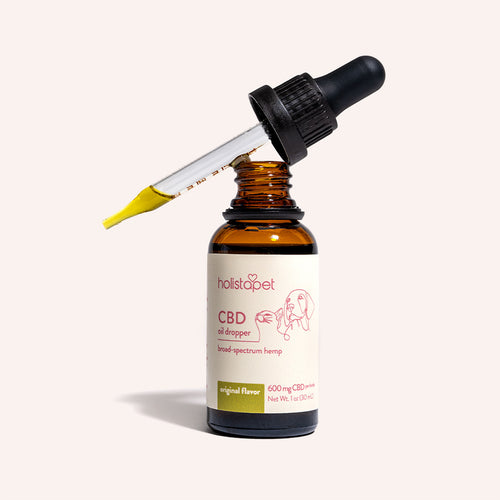 CBD Oil for Dogs - Fast Acting
CBD Oil for Dogs - Fast Acting
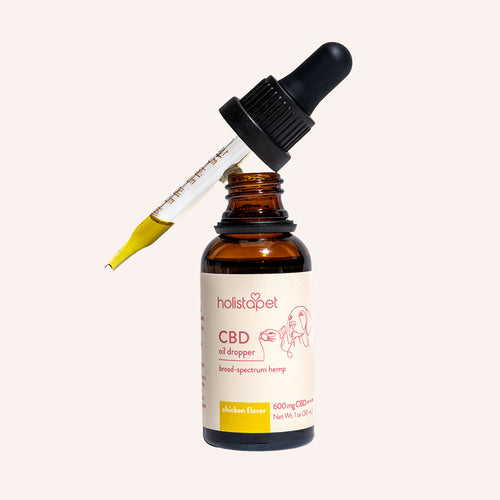 Chicken Flavored CBD Oil For Dogs - Easy Dose
Chicken Flavored CBD Oil For Dogs - Easy Dose
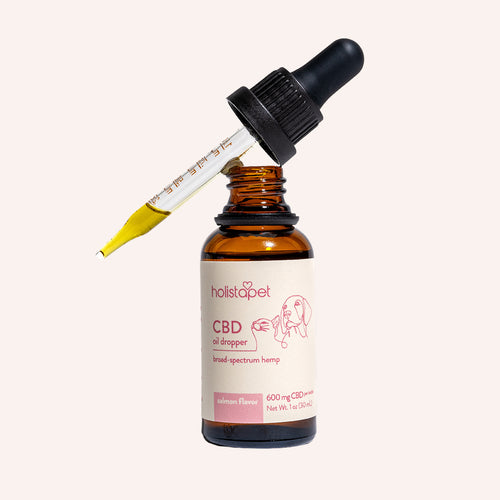 Salmon Flavored CBD Oil For Dogs - Highly Rated
Salmon Flavored CBD Oil For Dogs - Highly Rated
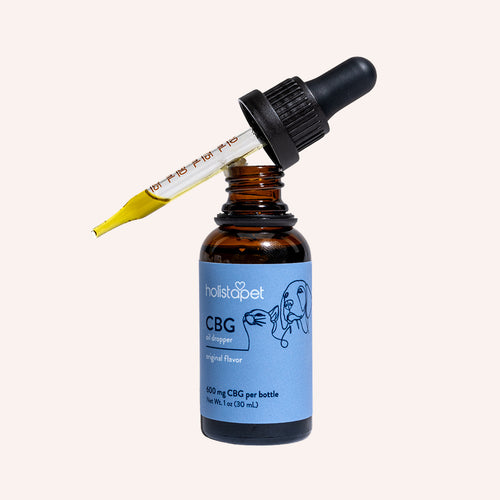 CBG Oil for Dogs and Cats - Loved by Thousands
CBG Oil for Dogs and Cats - Loved by Thousands


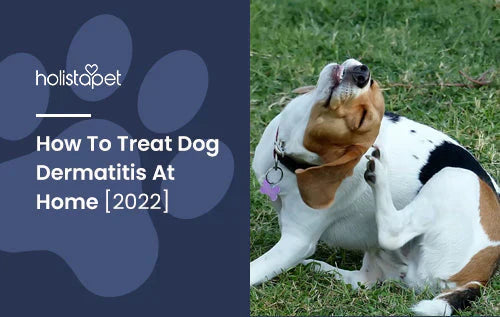
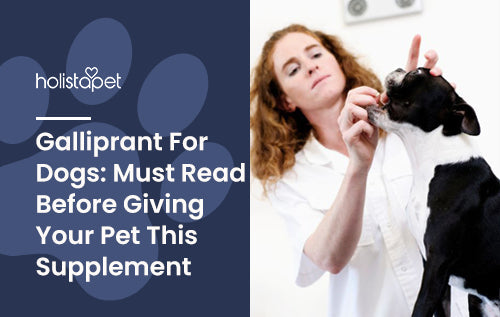

1 comment
Judy Geisler
Information on itching and also anal gland removable
Leave a comment
All comments are moderated before being published.
This site is protected by hCaptcha and the hCaptcha Privacy Policy and Terms of Service apply.